Sometimes bitter greens grow in the beds. They also give an unpleasant aftertaste to the dishes they are included in. Why cucumbers are bitter and what should be done in such cases is described in this article.
Why are cucumbers bitter?
All pumpkin plants, including cucumbers, produce the glycoside cucurbitacin. It is found in the above-ground parts of the plant, but its presence in fruits is small.It is this glycoside that gives cucumbers their bitterness. When a crop experiences stress, the content of cucurbitacin in greens increases sharply. This is a protective reaction of the crop, preventing animals from eating the fruits and allowing the seeds to ripen.
Cucurbitacin itself has a number of beneficial properties:
- has an antitumor effect;
- has an analgesic effect;
- has anti-inflammatory activity;
- promotes increased secretion of bile in the body;
- increases appetite;
- Bitter cucumbers promote weight loss.
The largest amount of cucurbitacin is found in fresh gherkins. As green plants grow, the glycoside content in them gradually decreases. The substance is destroyed during processing, so there is no bitterness in salted and pickled cucumbers.
Bee-pollinated cucumber varieties contain a lot of cucurbitacin and are able to quickly synthesize it under unfavorable growth conditions.
Modern hybrids are practically free of such disadvantages. Currently, crop selection is aimed at reducing the content and production of the glycoside by plants. Therefore, hybrids are practically not bitter. It is necessary to create conditions for them close to the death of the plant so that the green plants develop such a taste.
Causes of bitter cucumbers
The appearance of bitter fruits is always the result of extreme situations. Bitterness appears for the following reasons:
- Sudden temperature fluctuations.
- Watering with cold water.
- Prolonged cold weather.
- Uneven watering of cucumbers.
- Very hot weather and low humidity.
- Direct sun more than 14 hours a day.
- In varieties, the seeds were obtained from the end where the stalk (tail) was.
- Dense shadow.
- Lack of fertilizing.
Previously, there were some varieties that accumulated cucurbitacin even under normal conditions.Now they can only be found at an amateur gardener.
1 reason. Sudden temperature fluctuations
This is a factor that a person cannot influence. You can only smooth out the consequences to some extent when the bitterness in cucumbers accumulates less, but it is impossible to completely prevent the synthesis of cucurbitacin under such conditions.
What can be done
- To some extent, the consequences can be minimized, growing cucumbers in greenhouses or in warm beds.
- If the temperature drops sharply at night, it is better not to cover the cucumbers with film, but to completely mulch them with hay. Under a layer of grass, heat is retained much better than under film. In the morning, when the sun begins to warm up, the hay is removed. Hay is the best covering material in these conditions. If it is not there, then you can use straw, sawdust, peat. Film is the worst option in this case.
Very strong temperature fluctuations provoke increased formation of cucurbitacin and its accumulation in cucumbers. When the temperature becomes more even, there will be no bitter cucumbers.
Reason 2. Prolonged cold weather
Another factor that cannot be regulated. During prolonged cold spells, plants go into survival mode. They strive to produce seeds as quickly as possible. Bitterness begins to accumulate in the greens, which only increases with growth.
What to do
- Treatment of cucumbers with growth stimulants Epin-extra or Zircon. They greatly stimulate the plants and help them survive the cold period with minimal losses.
- Be sure to water with organic fertilizers.
- Cover the cucumbers with covering material. If it is very cold, the plants are additionally covered with hay.
Despite all the measures taken, there will still be a slight bitterness in cucumbers in this weather.
Reason 3.Watering with cold water
Cold water causes many problems for cucumbers. And spoiled taste is not the most difficult of them, although it is quite unpleasant.
Cucumber does not tolerate cold weather or cold water. The crop is always watered only with warm, settled water. The water temperature for irrigation should be at least 20-22°C. It is defended in greenhouses. As a last resort, plants are watered from a kettle with water at room temperature.
4th reason. Uneven watering
Improper watering causes severe stress in cucumbers, which leads to increased synthesis of cucurbitacin and, as a result, the appearance of bitter cucumbers.
What to do to correct the situation
- In hot weather, plants are watered daily. Watering is carried out in the first half of the day before the onset of heat, preferably early in the morning. Each plant requires 10 liters of water. At temperatures above 35°C, the irrigation rate is increased to 15 liters.
- In cold and cloudy weather, cucumbers are watered once every 2-3 days. Here they are guided by soil moisture; it should not dry out.
- In cool but sunny weather, water the cucumbers every other day.
- Water for cucumbers must be warm. If there is no warm water, then it is better to boil a kettle and dilute cold water with boiling water to a temperature of at least 20°C. Watering with cold water not only leads to the appearance of bitter cucumbers, but can also generally cause the death of plants.
- Watering should be uniform. You cannot first dry out the soil and then water the cucumbers. This is very unfavorable for them.
If it is impossible to visit the dacha regularly, you need to drip water the cucumbers or grow them on hydrogel.
5th reason. Very hot weather and low humidity
Cucumbers are native to India, where they naturally grow under tree canopies in a humid subtropical climate. At dachas, especially in the south when growing in open ground plants often suffer from too dry air.
To humidify the air in the borage plant, sprinkling is carried out. This is always done early in the morning so that the water has time to dry before the heat sets in. Otherwise, the leaves may get burned. In the evening, sprinkling is not carried out, since at night the cucumbers release droplets of moisture and the humidity in the borage increases sharply, and this can lead to diseases.
6th reason. Direct sun
cucumbers need shading. Unlike many other plants, direct sun is harmful to them. Under such conditions, plants begin to accumulate cucurbitacin, the greens become bitter, and the plant itself quickly completes its growing season.
For plants, 4-5 consecutive sunny days are enough for a significant amount of cucurbitacin to accumulate in the greens. Therefore, when grown in sunny places, plants are shaded with agrofibre or a mosquito net.
7th reason. Thick shadow
The culture requires diffused light, but not dense shade. In full shade it will either not bear fruit at all or will produce a small amount of bitter greens.
8th reason. Incorrect receipt of seed material
If the seeds were taken from the end where the stalk (tail) was, then the plants grown from them can produce bitter cucumbers. This trait is inherited. The glycoside accumulates most in the upper part of the fruit. Its content drops towards the middle of the green, and at the spout (where the flower was) disappears.
Therefore, if the seeds were taken incorrectly, nothing can be corrected; the cucumbers will be bitter.All that remains is to pickle the entire harvest.
9th reason. Lack of fertilizing
Often cucumbers turn bitter due to lack of nutrients. Hybrids under such conditions will not bear fruit at all, and the varieties will produce a small amount of small, underdeveloped greens with an unpleasant taste. If there is fertilizing, but there is not enough nutrition, then the greens also begin to taste bitter. The amount of cucurbitacin in them depends on mineral starvation: the stronger it is, the more bitter the greens are.
What to do and how to correct the situation
- If cucumbers have grown with bitterness, then this cannot be corrected. So that the subsequent harvest has a good taste, culture needs to be fed. Most of all, she needs nitrogen, so fertilize with either an infusion of manure (1:10), or an infusion of chicken manure (1:20), or an infusion of herbal fertilizer (1:10). Pig manure cannot be used as a top dressing; it strongly acidifies the soil and leads to the death of plants.
- In addition to nitrogen, cucumbers require a lot of potassium and magnesium. Therefore, organic matter is alternated with mineral fertilizers. The most suitable fertilizers for the crop are Kalimag and Cucumber Crystal.
- Feeding is carried out regularly. If the crop was not fed at all, then after the first application of fertilizers there will be an effect: the quantity and quality of the crop will increase, and the taste will noticeably improve.
- It is necessary to alternate root and foliar fertilizing.
Root feeding is done after watering the plants.
10. What to do if cucumbers grow bitter?
If greens still contain bitterness, then it can be neutralized to some extent.
- The fruits are soaked for 12 hours in cold water. In this case, the glycoside is gradually washed out from the greens.
- Soak the crop for 6 hours in lightly salted (not salty!) water (2 tsp/10 l).
- Most of the cucurbitacin is contained in the peel from the end where the stalk was. It is always richly green, usually without thorns or stripes, and smooth. Before eating the fruit, this end is cut off.
- Cut off the tail and rub it on the fresh cut. The appearance of white foam indicates the destruction of the glycoside. But this technique can only be used when cucurbitacin is contained only in the tail. If the greens are bitter along the entire length, then taking it will not help.
- The glycoside is contained only in the peel, so if you peel the greens, it is enough. The pulp does not contain bitterness and can be used for direct consumption and in salads.
- When pickling and pickling fruits, cucurbitacin is destroyed, so they can be processed, and the preparations will not be bitter.
Some modern hybrids do not contain bitterness. Cucurbitacin is not synthesized at all in such plants.
Cucumber hybrids without this annoying drawback:
|
|
Bitter cucumbers can be eaten; as has been said, they are even healthy. But still this significantly reduces the quality of the product.
You might be interested in:
- Diseases of cucumbers and methods of their treatment
- How to deal with cucumber pests in greenhouses and open ground
- How to properly form a cucumber bush
- What to do if cucumber leaves begin to turn yellow
- How to successfully combat powdery mildew on cucumbers
- Growing bell peppers in a greenhouse
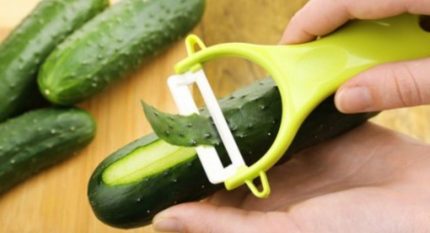

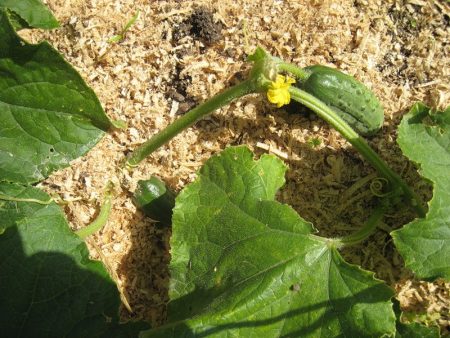
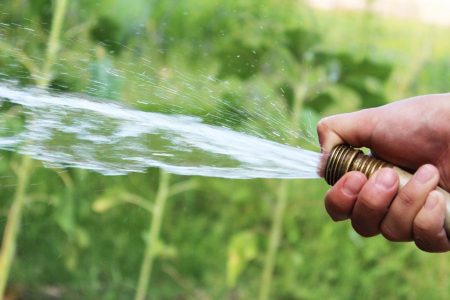
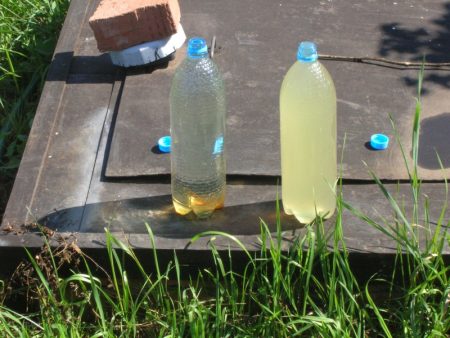

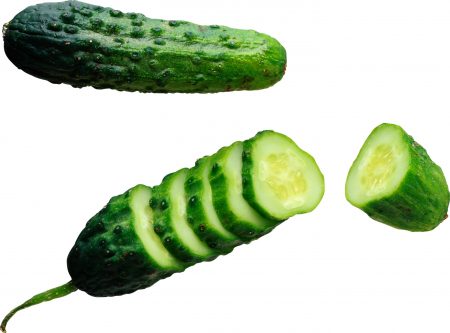
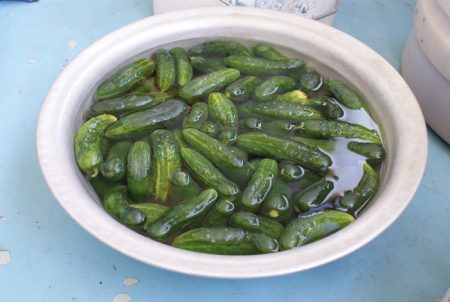

 CUCUMBERS NEVER GET SICK, I'VE BEEN USING ONLY THIS FOR 40 YEARS! I SHARE A SECRET WITH YOU, CUCUMBERS ARE LIKE THE PICTURE!
CUCUMBERS NEVER GET SICK, I'VE BEEN USING ONLY THIS FOR 40 YEARS! I SHARE A SECRET WITH YOU, CUCUMBERS ARE LIKE THE PICTURE! You can dig a bucket of potatoes from each bush. Do you think these are fairy tales? Watch the video
You can dig a bucket of potatoes from each bush. Do you think these are fairy tales? Watch the video
 How our fellow gardeners work in Korea. There is a lot to learn and just fun to watch.
How our fellow gardeners work in Korea. There is a lot to learn and just fun to watch. Eye trainer. The author claims that with daily viewing, vision is restored. They don't charge money for views.
Eye trainer. The author claims that with daily viewing, vision is restored. They don't charge money for views. A 3-ingredient cake recipe in 30 minutes is better than Napoleon. Simple and very tasty.
A 3-ingredient cake recipe in 30 minutes is better than Napoleon. Simple and very tasty. Therapeutic exercises for cervical osteochondrosis. A complete set of exercises.
Therapeutic exercises for cervical osteochondrosis. A complete set of exercises. Which indoor plants match your zodiac sign?
Which indoor plants match your zodiac sign? What about them? Excursion to German dachas.
What about them? Excursion to German dachas.